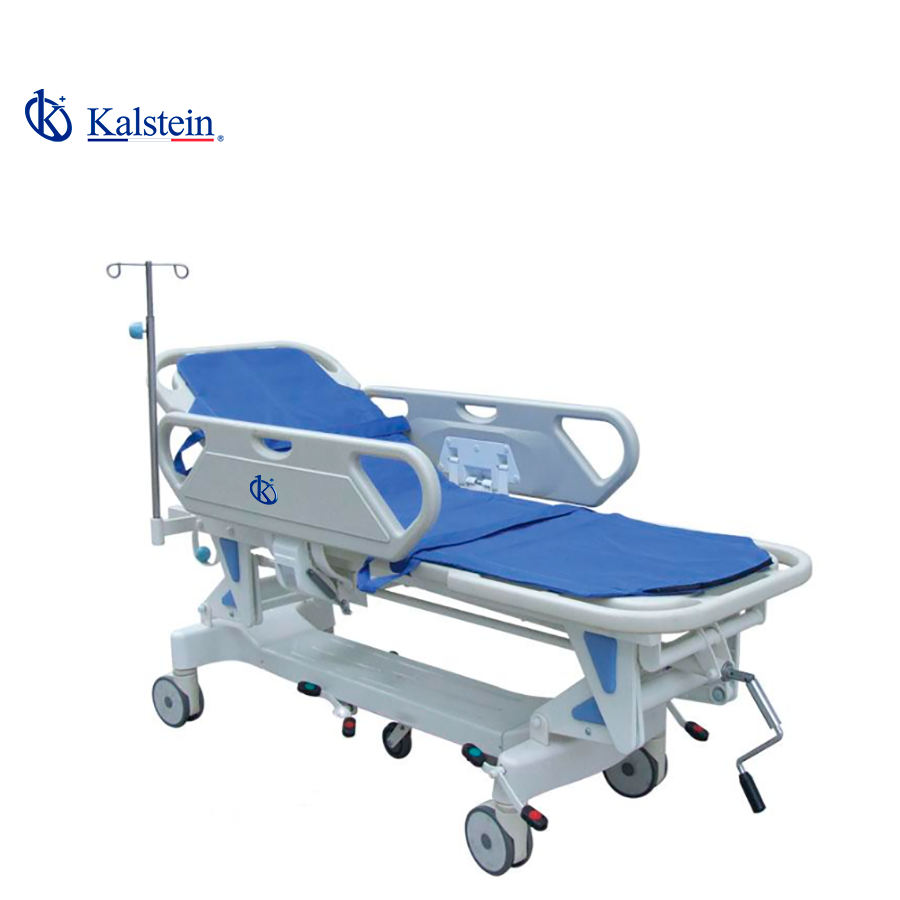When it comes to medical transport equipment, the right stretcher can make a significant difference in patient care. Two notable products in this area are the Manual ABS Two Function Transfer Stretcher YR06287 from Kalstein and the Stretcher Chair 5052 Series from Stryker. These products are designed to facilitate patient movement in medical settings, but they offer different features and benefits.
The Manual ABS Two Function Transfer Stretcher YR06287 is a versatile piece of equipment crafted by Kalstein. Known for its dual functionality, this stretcher can be easily adjusted for different purposes, making it an asset in various medical settings. On the other hand, Stryker’s Stretcher Chair 5052 Series focuses on providing a comfortable experience for patients who require more extended stays on the stretcher, including crucial features that enhance patient comfort during transport.
| Feature | Kalstein’s Manual ABS Two Function Transfer Stretcher YR06287 | Stryker’s Stretcher Chair 5052 Series |
|---|---|---|
| Functionality | Dual function: transfer & adjustable positions | Convertible to chair for extended stays |
| Material | ABS material for durability | Upholstered for comfort |
| Mobility | Smooth wheels for easy movement | Inclusive wheel locks and maneuverability |
| Adjustability | Manual adjustments for flexibility | Electronic controls for patient alignment |
How They Work
The Manual ABS Two Function Transfer Stretcher YR06287 operates on a manual system that allows caregivers to adjust the stretcher positions, making it suitable for transferring patients between beds or hospital rooms. Its ABS construction ensures it is lightweight yet sturdy, optimizing efficiency in patient handling.
In contrast, the Stryker Stretcher Chair 5052 Series incorporates an electric assist mechanism to convert the stretcher into a chair, providing a comfortable seating position for patients during prolonged examinations or treatments. This convertibility is powered by a user-friendly control system which enhances operational efficiency.
Purpose
These medical stretchers serve primarily the purpose of safely transporting patients within healthcare facilities. The Kalstein’s Transfer Stretcher is ideal for quick and efficient patient movements and is particularly useful in emergency settings owing to its easy maneuverability. Meanwhile, the Stryker Stretcher offers a dual function that includes both a stretcher and chair configuration, making it suitable for scenarios where patients need to remain on the stretcher for a longer period.
Types
When considering the types, Kalstein offers a model focused on transferability and quick configurability, appealing mainly to high-paced hospital environments. Stryker, however, provides a convertible option, catering to more specific needs of patient comfort or long-duration occupancy, thus serving different operational requirements.
Market Price
In terms of pricing, the Kalstein Manual ABS Two Function Transfer Stretcher YR06287 is competitively priced, aiming to provide affordability without compromising on quality. The price range for such stretchers typically varies based on the features and built-in functions. Conversely, the Stryker Stretcher Chair is positioned at the higher end, reflecting its additional functionality and premium design. Buyers are encouraged to evaluate their specific needs to select the most cost-effective option.
Frequently Asked Questions
What material is the Kalstein stretcher made of?
The Kalstein stretcher is constructed with ABS plastic, known for its durability and weight benefits.
Does the Stryker stretcher offer manual operation as well?
The Stryker stretcher primarily operates with an electronic system for converting positions but it also offers manual backup operations.
Are these stretchers suitable for use in ambulances?
Yes, both stretchers are designed with mobility and functionality in mind, making them suitable for use in ambulances and other transport settings.
Advantages and Disadvantages
Kalstein’s Manual ABS Two Function Transfer Stretcher YR06287:
- Advantages: Dual function, lightweight and durable, cost-effective, easy to maneuver.
- Disadvantages: Manual operation may require more physical effort compared to electronic models.
Stryker’s Stretcher Chair 5052 Series:
- Advantages: Comfortable for prolonged use, electric assist for easy conversion.
- Disadvantages: Higher cost, potentially less suited for quick movements.
Product Usage in the Field
In the medical field, the Manual ABS Two Function Transfer Stretcher YR06287 is predominantly used for transferring patients seamlessly between locations within a healthcare facility, bolstered by its robust build and adaptable features. Meanwhile, Stryker’s 5052 Series tends to be utilized in scenarios where extended patient observation or transport is necessary, thanks to its ability to transform into a chair.
Recommendations
For healthcare facilities looking to maximize efficiency and patient care quality, the following recommendations may prove helpful:
- For the Kalstein stretcher, staff should be trained on effectively using the manual adjustments to optimize patient comfort and handling.
- Regular maintenance and inspection of the wheels and moving parts are essential to maintain smooth operation.
- In the case of the Stryker stretcher, ensure batteries and electronics are kept in good condition to guarantee functionality when needed.
If you are seeking a blend of innovation and quality, look no further. At Kalstein, we offer an exclusive catalogue of laboratory equipment tailored for excellence. Our intuitive and efficient online purchasing channels are designed with your convenience in mind, ensuring the most competitive prices. Don’t hesitate, we bring science to life. Become a part of our community today. https://kalstein.co.in/product/manual-abs-two-function-transfer-stretcher-yr06287/.


